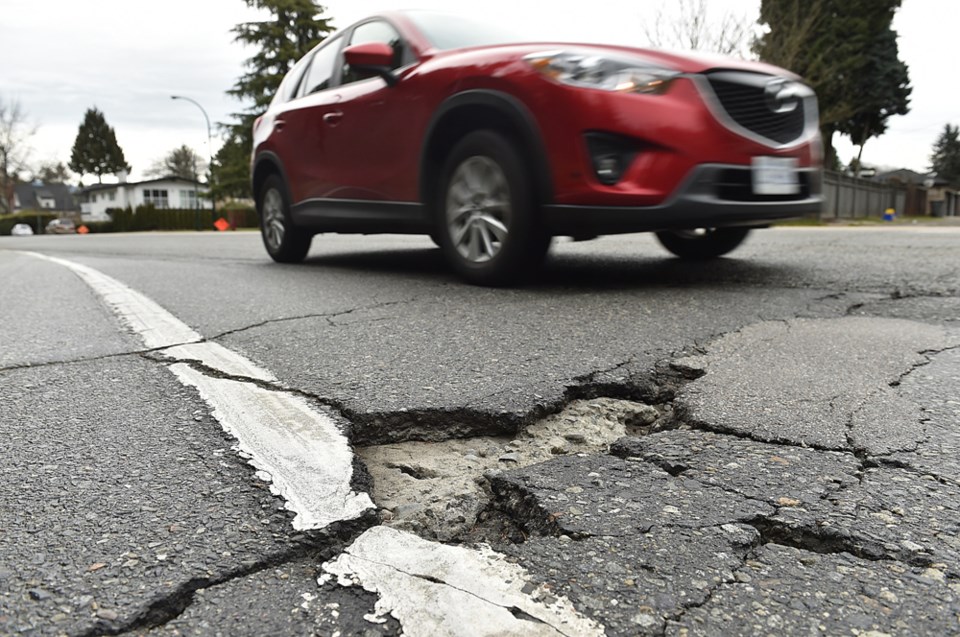Burnaby resident Carrie McLaren has a simple question for her city government.
“Is there a schedule for streets that need repaving?”
McLaren tweeted out the request about Manor Street in Burnaby at Gilmore Avenue. The tweet came with some photos (see below) of a road that looks like a waffle, but is not yummy in any way.
The road is garbage and needs fixing.
McLaren’s question got me thinking about how the City of Burnaby goes about planning to fix roads. We live in a city that is really spread out – from the Fraser to Burrard Inlet – and includes a mountain, a hill and agricultural areas.
People write to me about a lot of issues and in the top-three is the issue of road quality, from beat-up stretches of road to simple potholes.
Those potholes seem to really upset people. There’s one right now on Gaglardi Way that I never seem to notice on my way home in the dark until my vehicle hits it.
I hit it and I curse the city.
So, I decided to ask the City of Burnaby about how it approaches all of this and got some interesting information.
First of all, road paving and repairs is expensive.

In the last five years, according to a statement, the city has spent on average $17 million a year on major paving projects and about $1 million a year on pavement maintenance, including pothole repairs.
That’s a lot of cheesecake just for “pavement maintenance.”
There are two basic ways the city goes about assessing what needs to be fixed. The first is feedback from residents such as McLaren. I’ll get into that later.
The second way is a fancy electronic assessment or survey of every single road in the city that looks at structural integrity, surface stress and ride comfort.
“Every four years, city staff conduct a survey of all roads in Burnaby,” says a statement. “This survey informs a work plan for street resurfacing, prioritizing the roads in the worst shape. The survey takes about a month to complete, and involves driving a specialized truck throughout every nook and cranny of Burnaby. The truck uses lasers to analyze the structural integrity of the road. Streets are also rated for surface stress (cracks, potholes, etc.) and ride comfort (bumps and dips which affect drivers in their cars).”
The city says the next scheduled city-wide survey is set for 2020.
“City staff also seek opportunities to resurface roads where underground utility works are underway,” the city said. “For example, if a road in need of repair is undergoing a water main replacement, we may roll both projects together. This saves the city time and money, as we don’t have to shut the same stretch of road twice.”
Some issues just require a patch repair to bring the road back to standard.
“City staff are constantly monitoring our roads and receiving tips from residents on problem spots,” the city said. “Lastly, all general pavement markings in Burnaby are inspected once per year. Crosswalks are a high priority, but because they are made out of thermoplastics, repairs can only be done in the dry season.”
If residents see a location on the road in need of repair, they are encouraged to contact the Engineering Dispatch at 604-294-7200. The phone line is open 24 hours a day, 7 days a week.
Follow Chris Campbell on Twitter @shinebox44.



